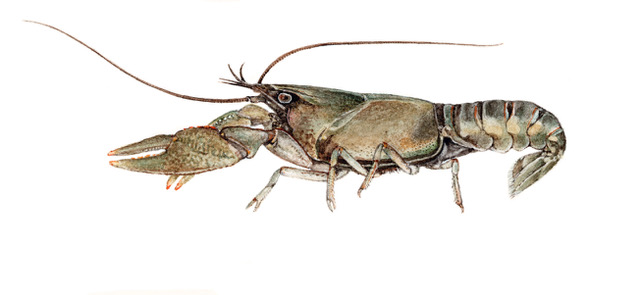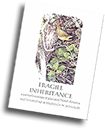
ecological change
in Canada

"Wow this is an awesome database! . . . it looks like the records have everything I am interested in."
6 St-Lawrence St
Bishops Mills Oxford Station
Ontario, Canada KOG 1T0
(613) 299-3107
info@fragileinheritance.ca
A History Of The Database
Database Introduction
Database Uses
Screenshot of a sample record
Example of a printed record
Specimen labels
Our database began in 1983 on a Hewlett Packard 9845 computer at the National Museum of Natural
Sciences' Beamish Building when Fred's handwriting became too Darwinian to be interpreted by
curatorial technicians, and he printed catalogue data on file cards for entry into the museum
catalog. This was also our first lesson in the impermanence of computer media, when the
dot-matrix printing subsequently faded on the cards.
With the availability of the portable IBM-clone Hyperion computer in 1984, Fred shifted his
catalogue to a computer listing (as output from BASIC data statements). In the cross-continental
descriptive field work for Fragile Inheritance: a Painter's Ecology of Glaciated North America,
from 1984-1989, we enhanced a text listing of these catalogue entries to form a narrative,
printing from a carbon ribbon onto cotton-fibre paper. In 1990, for the Bruce Peninsula Herp
Survey, with the guidance of Wayne Weller of the Ontario Herpetofaunal Summary, Fred began to
use dBase III+, in a data structure derived from that of the OHS, to record observations, and to
output prose-like species accounts and descriptions of sites from the database. By 1994, we
moved to Foxpro 2.0, the most advanced MS-DOS database application, and to a laser printer
nearly as heavy as a woodstove, inherited from Aleta's editor, Robin Brass.
In 1993 Fred and Aleta began to call themselves the Biological Checklist of the Kemptville Creek
Drainage Basin (BCKCDB), in an attempt to counter the anthropocentric bias of local politics
with an institution centred on the non-human inhabitants of their home area, in the form of an
all-taxon biodiversity database. In 1994 the database switched from dBase to Foxpro 2.0, and the
format changed to hold narrative text and prose renditions of datasheets. Fred wrenched almost
everything he did into formats which permit storage of data in records of this database, notably
the book A Place to "alk: A Naturalist's Journal of the Lake Ontario
Waterfront Trail, (Karstad et al. 1995) largely edited down from database output, and
the report to the Ontario Ministry of Natural Resources on the effects of the 1998 ice storm
(Seburn & Schueler 2000) with a number of additional fields for measurements of snowpack
profiles added to the database structure for analysis, and the additional fields converted to
prose summaries for archiving in the standard format.
The BCKCDB database system was named after Grinnell in 1996, when Fred began to pull the input
and output programs and related database tables into an organized database 'project'. Filtering
and indexing of the database records allowed emulation of the three elements of the Grinnell
system: Journal, Catalog, and Species Accounts.
Our 1997 Workshop on Natural History/Natural Resource Databases and
Mapping at Kemptville College was attended by naturalists, natural scientists, museum
workers, land managers and stewards, natural history database proprietors, resource extraction
managers, landowners, Land Stewardship Council members, Mohawk members of the Eastern Ontario
Model Forest, and representatives of the National Heritage Information Centre and the Canadian
Parks and Wilderness Society. We discussed the use and compatibility of databases in
understanding the ecology, biota, and human occupancy of eastern Ontario.
Starting where the Database Workshop left off, crystallizing around the need for a catalogue for
the newly created Eastern Ontario Biodiversity Museum, funded by the Eastern Ontario Model
Forest and with the help of Anita Miles, we set out to see what would be needed for a
general natural history database. Fred and Anita widely consulted about databases then in use,
and made minor changes to the structure of the database, in anticipation that it would be
central to the museum's curatorial and ecological monitoring activities.
Our interest in narrative, and in prose content and output which must be understandable by the
widest possible audience, has taken us in a more literary direction than is usual for database
managers and has biased us against the cryptic codes and abbreviations that creep into most
database systems.
We attempted to push through "the Willow swamp of inter-tangled 'worldwide'
standards to the Wood Frog chorus of a database structure appropriate for the Eastern
Ontario Biodiversity Museum", without spooking potential users and contributors into
muddy-bottom silence. To this we brought the experience of a single naturalist building a data
structure for his own use that allowed
- the input of natural history records
- partitioning of records as identification of mass collections are made
- output of data to others who request them.
We named the system "EOBase" both as a contraction of 'Eastern Ontario Database', following the
tradition in which the ancestral desktop database program was called 'dBase', and in the hope
that it would represent a dawning of ecological and biotic awareness among the People of Eastern
Ontario.
These are some of the questions we grappled with during the early days of development of EOBase:
- Does the fact that one's database has grown up on its own, in response to the perceived needs of oneself, one's family and community, of other naturalists, and of government agencies, imply that its structure is riddled with hidden meta-data anomalies that will make it useless in a wider context?
- Which of the myriad models for compatibility among such databases are to be taken seriously?
- What's the proper balance between compactness and generality in field names & structure, and fields that specify or code every possible aspect of a record?
- How far is it appropriate to stray from a fully relational structure in order to make records independent of a complex swarm of linked tables?
- Is the desire to make a widely-accessible, widely-contributed-to natural history database a key element in the human population's relationship to other species an elitist pipe-dream or is it an 'eco-centric' populist necessity?
In the decade since the EOBM failed to make the database central to the its curatorial and
ecological monitoring activities, and then dispersed its collection to the New Brunswick Museum, we've continued to
pump our observations and collections into it, and we presently (Feb 2010) have 86,800 records
in the biographical table of the database. In 2006-2008 Matt Keevil curated Wayne Grimm's land
snail collections into the database for deposit in the Canadian Museum of Nature, a total of 3000 records.
When it comes to database programming, naturalists tend to learn the technology they need to
know in order to do what they need to do, and leave it at that. One of the leading experts in
North American land snails still boots up the blue screen of dBase III+, and that does what he
needs it to do for him.
In 2009 Fred tried to wrench the database into the more advanced Visual Foxpro, but he found
this object-oriented language so thick with options about the appearance of input forms; and
limitations on what goes on that are based on the presumption that one is operating in a
network; and relations, indices, and input conventions that are in the database structure rather
than written out in code, that he didn't make any net progress. After consultation with Steven
Black, of http://stevenblack.com we've
abandoned the conversion of the database to a more complex platform, and are concentrating on
getting Foxpro 2.6 running on all our computers, writing routines for on-the-road data entry,
and preparing for field work.
As we do this we're looking towards making the database into an application which others can
easily use for recording, managing, compiling and extracting their natural history observations.
if anyone is interested in working with us on this, please contact info@fragileinheritance.org.
The fields of EOBase are given in http://pinicola.ca/h2001a.htm#table
Database Introduction
Database Uses
Screenshot of a sample record
Example of a printed record
Specimen labels

There is no other independent organized group in Canada which is dedicated to promoting long term monitoring. This is your chance to support the work of Fragile Inheritance.
lavishly illustrated with watercolours and
descriptive prose from sea to sea
drawing the baseline for
a legacy of beauty and
change - Aleta Karstad
and Frederick W .
Schueler's life work
